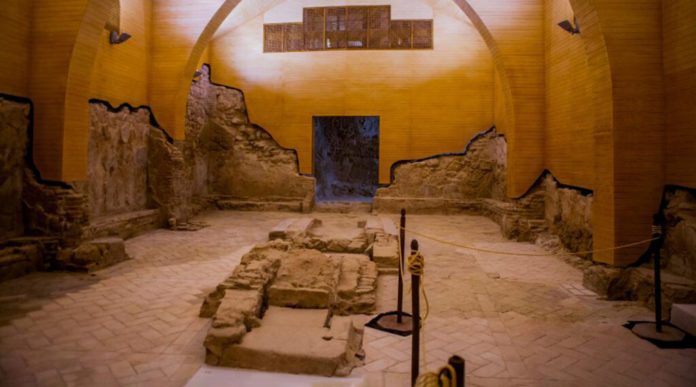
MADRID (JTA) – Beneath a sprawling 14th-century building with moss-furrowed terrace walls and interiors painted in garish strokes of purple and yellow lie what could be the remains of Spain’s second-largest synagogue from the medieval era.
Join our WhatsApp groupSubscribe to our Daily Roundup Email
The 7,500-square-foot estate, currently being explored by researchers and archeologists, is nestled in a narrow alley in Utrera, a small city in the Seville province in southwest Spain. It sits covered with the geraniums popular in the city’s historic Jewish quarter.
The property has had a lengthy and multifaceted history as a hospital, in the 17th century; a Catholic chapel; an orphanage, and most recently, in the 20th century, as a school, a restaurant and a cocktail bar.
But the city council bought the now abandoned property in 2018 and launched an archaeological excavation project last February, with the hope of uncovering a synagogue that was pushed underground over the centuries.
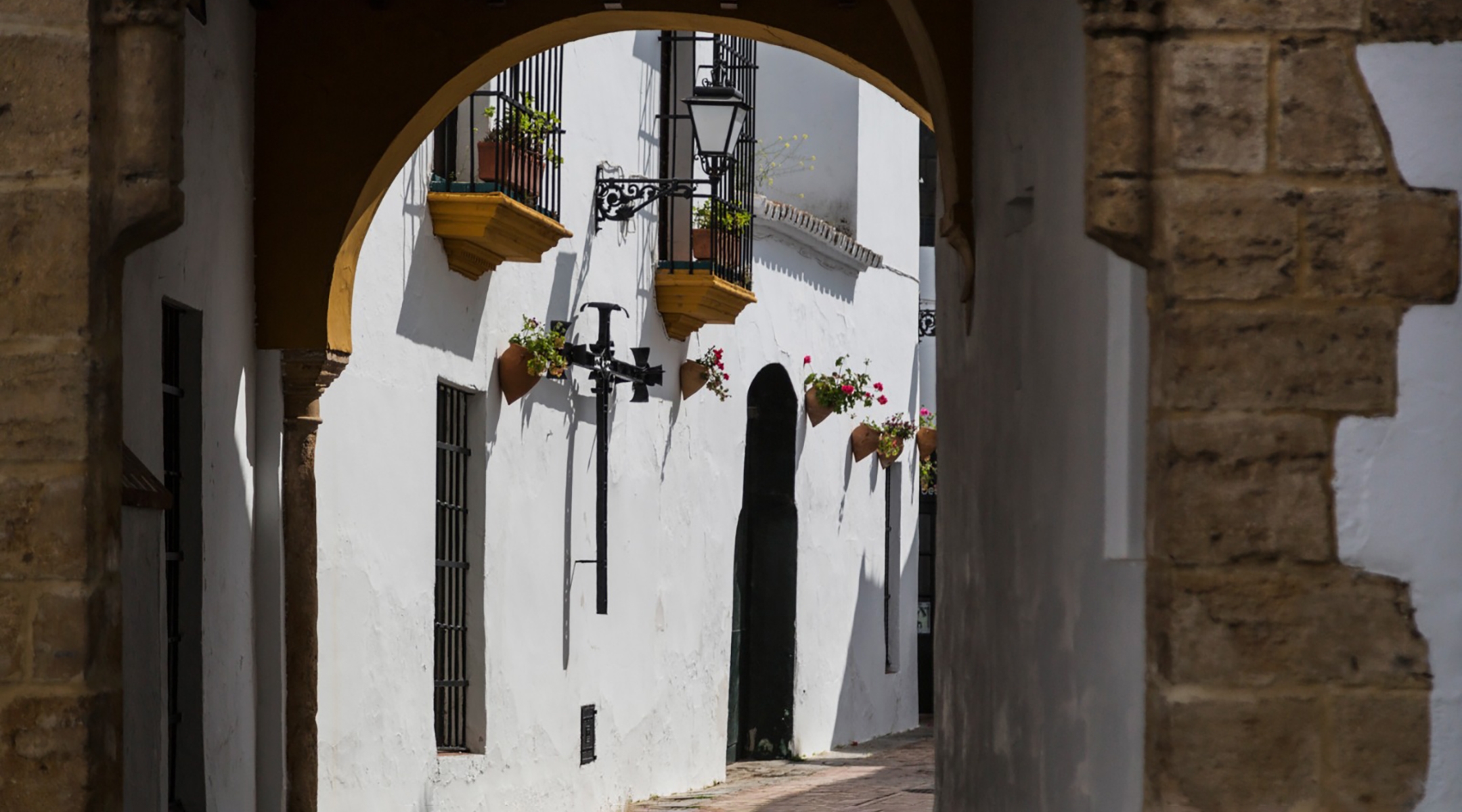
A view of a street in Utrera’s Jewish Quarter. (Utrera City Council)
The goal is not only to preserve and foster Jewish history and culture — something the country’s government has prioritized in recent years in order to rectify its dark Inquisition history.
As COVID-19 continues to hurt tourism worldwide, Spain is looking to stay one of the most visited countries on the planet. And ancient synagogues can be tourist draws, especially for smaller towns that lack them.
Uncovering the synagogue “would put our town on the world map, alongside cities such as Seville,” said José María Villalobos, Utrera’s mayor and the project’s lead supporter. “This would be a powerful appeal for Utrera as a major touristic destination.”
Utrera is far from alone in mining its Jewish past. Starting well before the pandemic, governmental and private interests at the regional and municipal levels have been attempting to unearth, restore and display Jewish heritage sites from the Middle Ages.
“In terms of cultural heritage, Spain has undergone an enormous transformation since the end of the 1980s, with an upsurge in archaeological interventions associated with the booming construction industry,” said Jorge A. Eiroa, professor of medieval history at the University of Murcia. He explained that synagogues often appear when grounds are excavated during construction.
Over several centuries, Sephardic Jewish communities in Spain left a striking medieval architectural legacy. Their former synagogues are jewels of artistic and cultural heritage that illustrate the splendor and prosperity of Spain’s medieval Jewish communities.
But after 1492 — the year Jews were expelled from Spain through the Inquisition — most were abandoned, and many were built over or subsumed into other buildings. Some of the few prominent ones left intact today were repurposed into Roman Catholic churches, such as El Tránsito and Santa Maria la Blanca in Toledo, the Córdoba synagogue and Corpus Christi in Segovia. (Some of those, ironically, have recently turned back into Jewish-themed entities, as museums and cultural centers that educate about Spanish Jewish history.)
Global stories: Want more international stories in your inbox? Sign up for JTA’s Around the World newsletter.
Many synagogues across Europe have been transformed over the centuries. In 2018, a British organization called the Foundation for Jewish Heritage launched an interactive map that identifies and categorizes them, showing how their functions have changed — some are now shops, restaurants, sports facilities and even funeral parlors.
Many Jewish sites of worship scattered throughout the Spanish peninsula, however, are hidden underground with no documented evidence of their existence.
“When a synagogue is converted into a church, any Jewish vestiges are promptly removed,” said Eiroa, explaining the difficulties of tracking down the old synagogues. “If we are lucky, the Torah ark is transformed into a small altar, as in the case of Córdoba,” and thus preserved.
Miguel Ángel de Dios, one of the archaeologists working on the Utrera project, is confident that he will discover an underground synagogue. His team is looking for religious Jewish “traits” — including clues that show if the site was divided into men’s and women’s sections.
“We still have no idea if the synagogue is there or not and what state it is in. But, if we find it, we believe a mikveh, or ritual bath, should be located outside the prayer room, as well as some sort of building for the women’s gallery,” de Dios told the Jewish Telegraphic Agency. “It may not have been preserved, but we can certainly seek for traces of some kind of distinction between men and women.”
About 170 miles northeast, in the ancient city of Úbeda, stands another formerly unknown synagogue with a medieval mikveh, or ritual bath, which gives it a nickname: the Synagogue of Water.
Buried under the bedrock of the city’s surrounding houses, the synagogue lay undisturbed until it was accidentally unearthed in 2007. Its discovery astonished the property’s owners, who were developing apartments for tourists and a parking lot.
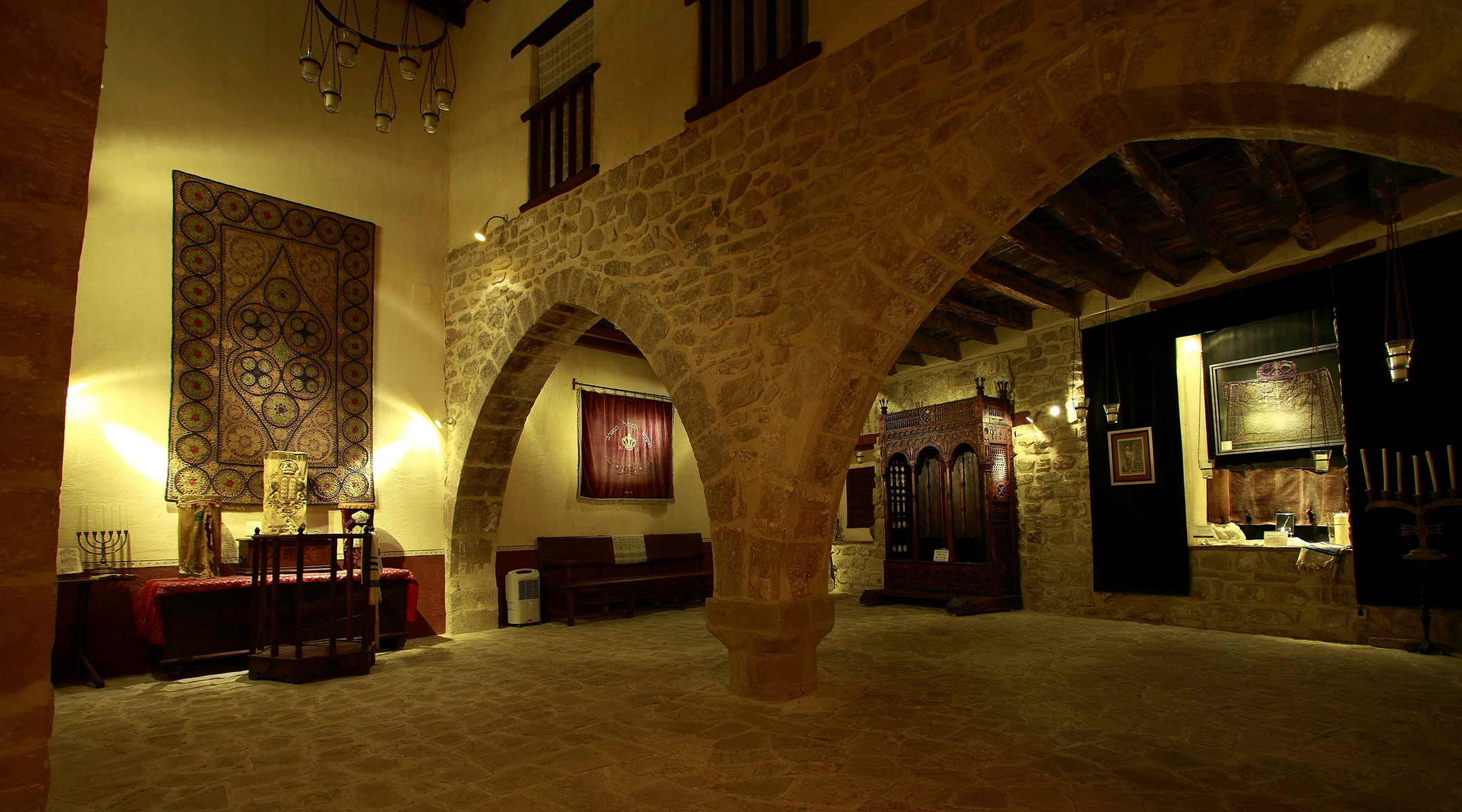
A view of the main hall of the Synagogue of Water in Úbeda, Spain. (Andrea Pezzini)
Primary owner Fernando Crespo quickly understood the site’s cultural significance — and its tourism potential — and halted the construction projects. After three years of excavations and restorations, the synagogue opened its doors to the public as a museum in 2010.
“It was a great surprise to all of us, to find this magical place — a striking discovery, a journey through history,” said Andrea Pezzini, head of the company Artificis, a tourism company that now manages the synagogue.
The Synagogue of Water is divided into seven interconnected chambers, including the well-preserved mikveh. The pool, situated on the lowest floor, was carved into natural rock and is illuminated by picturesque beams of natural sunlight, giving it a mystical quality. For centuries, natural water from a well has flowed through it, renewing itself every day. Scholars believe that there is only one other record of a similar natural mikveh in Spain, in the small Catalonian town of Besalú.
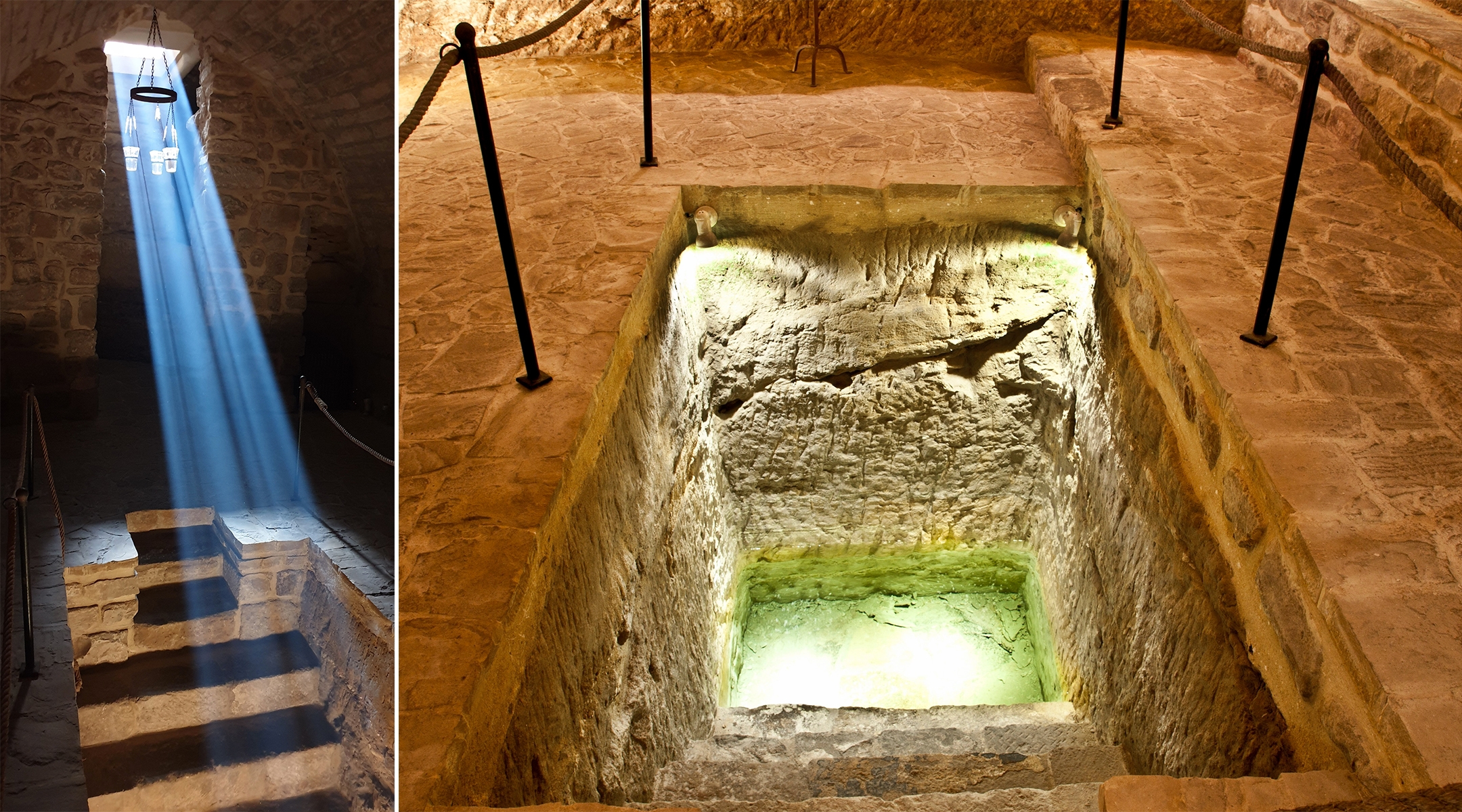
Photos of the mikvah at the Synagogue of Water in Úbeda, Spain. (Joaquín Fruiz)
Before COVID, the Synagogue of Water had about 27,000 visitors per year; during the first pandemic year, that dropped to 10,000.
The Lorca Synagogue in Lorca, located in the southwestern Murcia region, was discovered in 2003 during the building of a hotel. But it wasn’t discovered underground — it was tucked away in a medieval fortress.
The castle, which sprawls throughout the historic Alcalá neighborhood, has stood since sometime between the ninth and 15th centuries. The synagogue is the only one known to have been found with an intact bimah, the raised platform where services are held, and Torah ark.
“Such ritualistic remains are preserved in those synagogues that become uninhabited and unoccupied,” Eiroa said.
Archaeologists found over 2,600 fragments of glass, which they used to reconstruct 27 lamps formerly used to light the temple. Today they are displayed in the city’s Archaeological Museum, next to other fragments of hanukkiot, ceramics, buckles, rings, and coins, which educate visitors about the everyday life of Lorca Jews and how they celebrated their festivities over 500 years ago.
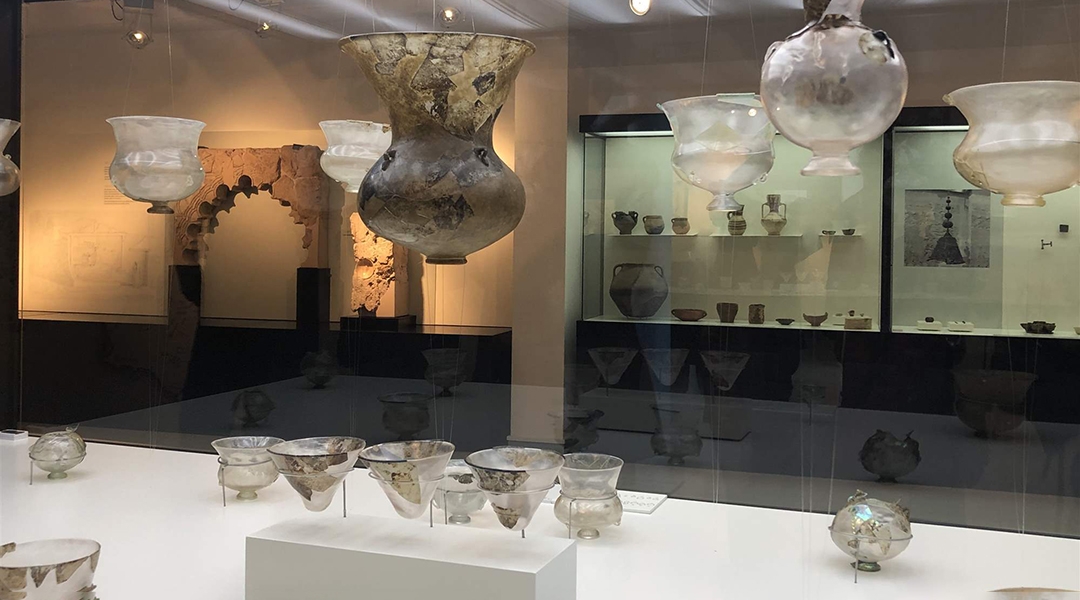
Lamps found during the excavation of the Synagogue of Lorca are displayed in the Municipal Archaeological Museum of Lorca. (Museo Arqueológico Municipal de Lorca)
Other recently discovered synagogues include Guadalajara’s Synagogue of Molina de Aragón, which sits only as a pile of ruins for now, and Teruel’s Synagogue of Híjar. In the latter case, rehabilitation work was completed in early 2021 but a date to open to the public has not been determined.
Eiroa said the growing emphasis on recovering Jewish heritage sites will only continue to surge, as municipalities continue to capitalize on their connections to Sepharad, as its Jews referred to Spain in Hebrew.
“It is quite evident that Sepharad’s past has always been a very appealing and captivating asset and from a heritage point of view very attractive to city councils and autonomous communities,” he said.

When travelling throughout Europe, I always leave a day or two to find and explore and daven in some of the long abandoned shuls. Sometimes I make the minyan sometimes not, but the hospitality is second to none. They never ask if I am an agudah nik, a chasid or Mizrachi. they are just happy to host another jew.
It is wonderful that these are being found and uncovered, even renewed and made accessible to others.
Who knows what will come of this? – Maybe just tourism, maybe more appreciation of Jewish heritage and maybe people rediscovering their Jewish roots leading even to some Yiddishkeit!